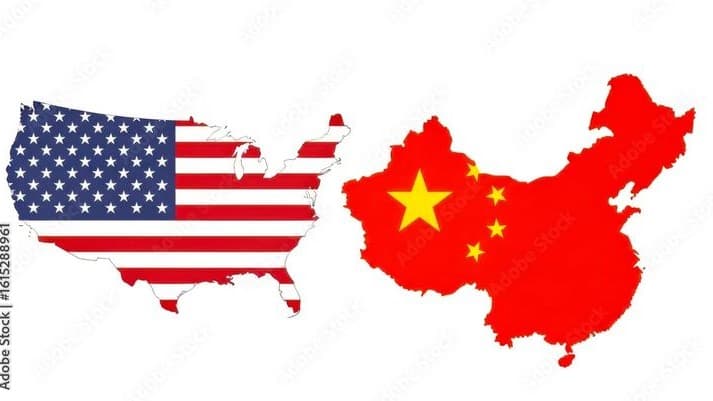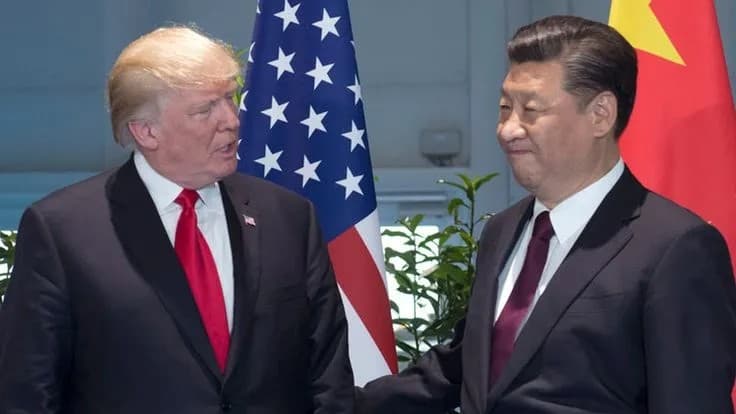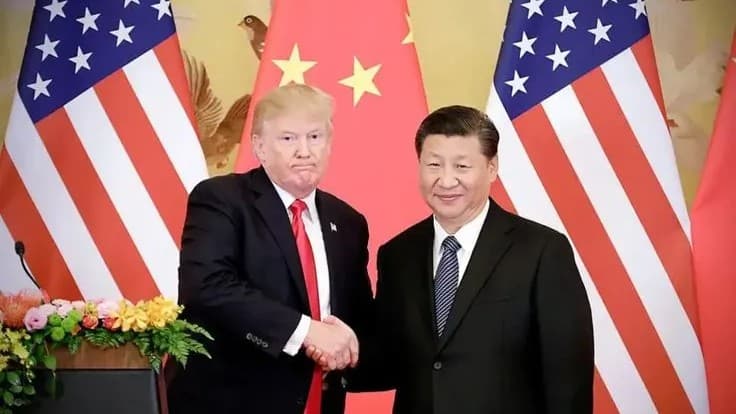📰 US-China Trade War 2025: Trump’s 100% Tariff Move and China’s Response.
Donald Trump’s 100% tariff on Chinese imports reignites global trade tensions as China plans countermeasures, shaking markets and reshaping world

Introduction
In 2025, global markets are once again facing uncertainty as former U.S. President Donald Trump announces a 100% tariff on Chinese imports. This sudden move has triggered strong reactions from China, raised concerns in international markets, and sparked discussions among global economists about the future of global trade.
This article explains what is happening, why it matters, and what lessons the world can learn from this growing economic tension.
The Background: Why Trump Imposed 100% Tariffs
Donald Trump’s decision to double tariffs on Chinese goods marks the revival of the U.S.–China trade war, which first began during his presidency in 2018–2020.
According to Trump, the move aims to:
Protect American manufacturers from cheap Chinese imports.
Push China to reduce its export dominance in technology, steel, and electronics.
Encourage U.S. companies to bring production back home.
However, critics argue that this policy could backfire, leading to higher prices for American consumers and potential inflation in essential goods.
- China’s Reaction: Strategic and Calm
China’s official response has been measured but firm. The Chinese Ministry of Commerce called the U.S. action “unreasonable and harmful to global stability.”
Beijing is now considering countermeasures, which may include:
Imposing tariffs on American agricultural and energy products.
Strengthening trade ties with Russia, the European Union, and developing nations.
Increasing investment in domestic manufacturing and AI-driven automation to reduce dependency on the U.S. market.
Chinese media outlets have described the tariff move as a “short-term political strategy” by Trump to influence U.S. voters before upcoming elections.
- The Global Impact: Markets, Supply Chains, and Inflation
The U.S.–China trade tension immediately affected global markets:
Asian stock markets fell by 3–5% after Trump’s announcement.
The U.S. dollar strengthened temporarily, while the Chinese yuan weakened.
Oil prices rose as investors feared trade disruption could slow down global economic growth.
Economists warn that if this tariff war continues, supply chains could be severely disrupted, especially in electronics, automobiles, and consumer goods.
Countries like India, Vietnam, and Mexico may benefit as companies look for new manufacturing hubs outside China.
- What World Leaders Are Saying
Reactions from global leaders have been mixed:
The European Union has urged both sides to return to negotiations.
India has remained neutral, emphasizing that open trade benefits all nations.
Japan and South Korea have expressed concern about regional stability.
Russia has shown support for China, calling for a “multi-polar trade system.”
These responses highlight a growing global division in economic alliances and trade priorities.
- What Lies Ahead: The Future of Global Trade
Experts believe that this new round of tariffs could lead to:
A fragmented global economy, divided into U.S.-led and China-led trade blocs.
A rise in domestic production and automation as nations aim for self-sufficiency.
Possible long-term inflation in consumer goods due to increased import costs.
However, some economists also see this as a chance for countries like India, Indonesia, and Brazil to become major players in global manufacturing.
- Lessons for the World
This situation offers key lessons for all nations:
Economic interdependence must be balanced with national security.
Trade diversification helps reduce risks from single-country dependency.
Technology investment is essential to stay competitive in the changing world economy.
Diplomatic dialogue is always better than economic confrontation.
Conclusion
The US-China Trade War 2025 is more than a dispute over tariffs — it reflects a deeper struggle for economic power, technology dominance, and global influence. Both nations have much to lose if tensions escalate further.
For the world, this conflict serves as a reminder that global cooperation, fair trade, and mutual respect remain the only sustainable paths toward progress and stability.
FAQs
Q1: What is the US-China Trade War 2025?
A1: The US-China Trade War 2025 refers to the renewed economic conflict between the United States and China, marked by aggressive tariff policies, trade restrictions, and retaliatory measures affecting global trade.
Q2: What did Trump announce regarding tariffs in 2025?
A2: Donald Trump announced a 100% tariff on certain Chinese imports, escalating tensions between the two largest economies in the world.
Q3: How did China respond to Trump’s 100% tariff move?
A3: China responded with retaliatory tariffs, trade restrictions on US goods, and strategic measures to protect its domestic industries, aiming to balance the economic impact.
Q4: Which industries are most affected by the tariffs?
A4: Industries such as electronics, agriculture, automobiles, steel, and technology are among the most affected by the US-China tariffs in 2025.
Q5: What is the global impact of the 2025 trade war?
A5: The trade war has caused market volatility, disruption in supply chains, increased production costs, and uncertainty in international trade, affecting both developed and emerging economies.
Q6: How are US businesses coping with the tariffs?
A6: Many US businesses are seeking alternative suppliers, increasing domestic production, or passing costs to consumers, while some companies face significant profit losses.
Q7: Can the trade war be resolved soon?
A7: Resolution depends on negotiations, political decisions, and strategic compromises from both nations. Short-term solutions may include partial tariff reductions, while long-term stability requires broader trade agreements.
Q8: Where can I follow updates on the trade war?
A8: Updates are available through official government statements, global news agencies, financial market reports, and international trade organizations.
Dhananjay Singh
Professional Content Writer, Researcher & Visionary Storyteller
"तरक्की को चाहिए नया नज़रिया—और यह नज़रिया शब्दों से शुरू होता है।"
More from Dhananjay Singh →

